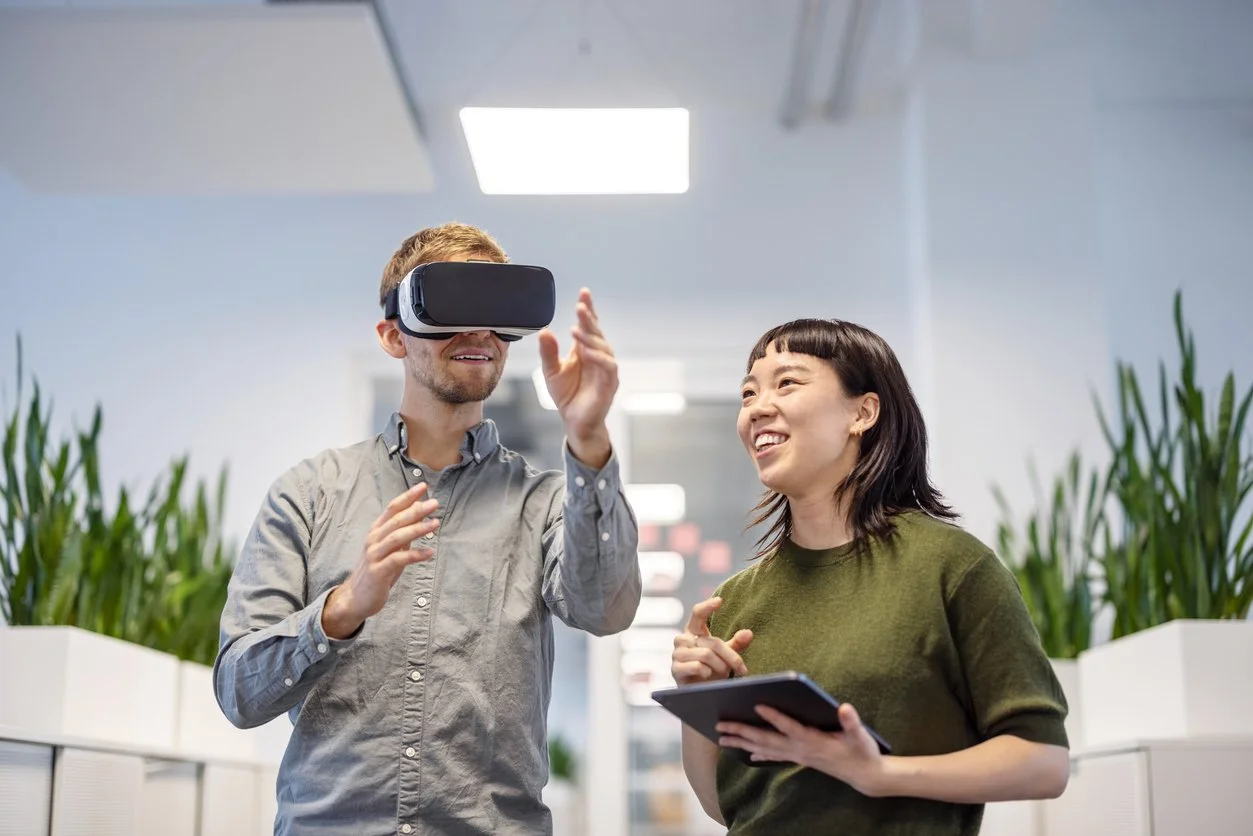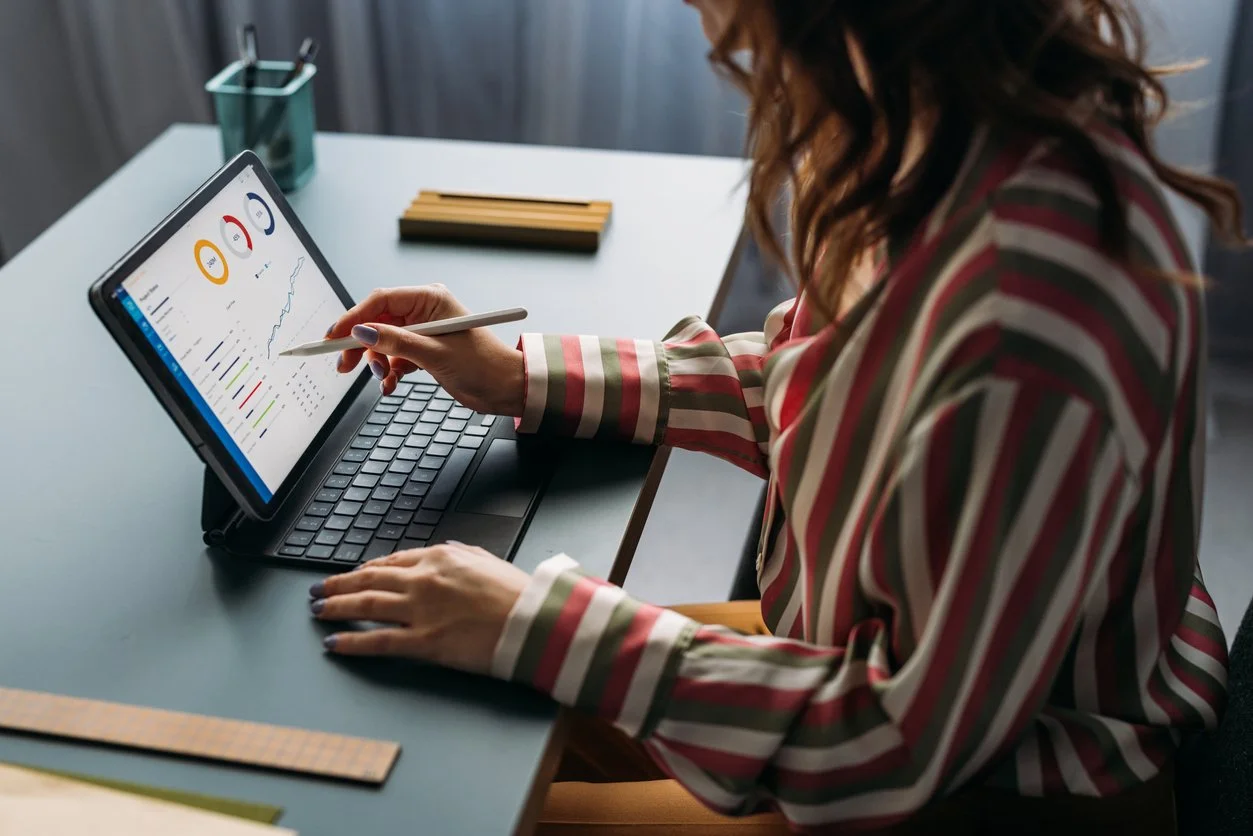Unique Mood Board Creation Ideas for Commercial Interior Designers
Transform your commercial mood boards by combining digital and physical elements for maximum impact. Leverage platforms like Morpholio Board and Collaboard for real-time collaboration, while incorporating tactile samples and swatches for in-person presentations. Mix high-end furniture libraries with brand-specific colors, and utilize AR technology to showcase your concepts in actual spaces. Add sustainable materials and smart lighting concepts to position designs as forward-thinking. The journey to creating truly innovative mood boards is just beginning.
Article Main Points
Blend physical material samples with digital 3D renders using hybrid presentation techniques to create multi-sensory mood board experiences.
Incorporate brand colors and values through strategic material selection and custom fixtures that subtly reference company aesthetics.
Utilize cloud-based collaboration tools to create dynamic mood boards that clients can view and comment on in real-time.
Layer sustainable materials and smart technology concepts to showcase environmental leadership and innovation in commercial spaces.
Create storytelling-focused layouts that guide viewers through design narratives using strategic arrangement of visual elements and focal points.
Digital Tools That Transform Commercial Mood Board Creation
The digital revolution has transformed how interior designers create and share mood boards for commercial projects. You'll find powerful digital design platforms that put professional-grade tools at your fingertips, enabling you to craft compelling presentations that wow clients. The Studio Text tool enables sophisticated typography and styling to elevate your designs.
Users can discover inspiration and save collections through diverse themed images on Pinterest and other platforms. Leading software options like Morpholio Board and Collaboard offer robust collaborative tools that'll revolutionize your workflow. These tools serve as an essential reference point to maintain project consistency throughout the design process. You can:
Access vast libraries of high-end furniture and design elements
Create custom-sized boards for any presentation format
Export your work in multiple file types
Collaborate in real-time with team members
Integrate diverse media formats
With platforms like Canva and Designhill, you're equipped with customizable templates and grid options that streamline the design process.
These tools don't just make mood board creation easier—they make your work more impactful and professional.
The Art of Mixing Physical and Virtual Elements
When you're ready to take your mood boards to the next level, combining physical and digital elements can create a truly dynamic presentation that engages all the senses.
You'll find that pairing tactile materials like fabric swatches and paint chips with digital renders and virtual reality walk-throughs gives clients a thorough understanding of your vision.
The beauty of this mixed-media approach lies in its flexibility - you can easily switch between handling real materials during in-person meetings and sharing digital versions for remote collaboration. Using tools like Microsoft HoloLens enables designers to create and modify 3D digital prototypes in real-time. 🎨💻
Taking inspiration from WearSpaces' design philosophy, incorporating immersive 3D spaces can help clients better visualize how different elements will interact within the commercial space.
Blending Tactile Digital Textures
Modern interior design thrives on seamlessly blending tactile and digital elements to create dynamic, engaging spaces.
You'll want to leverage both physical and virtual textures to deliver powerful sensory experiences that leave a lasting impression on your clients.
To create impactful mood boards that showcase this blend:
Combine physical material samples (wood, stone, fabric) with digital renders
Use apps that allow you to overlay virtual textures onto real spaces
Photograph actual material combinations, then enhance them digitally
Create digital collages featuring both tactile engagement elements and virtual patterns
Don't limit yourself to just one medium.
Reality Meets Virtual Design
Blending physical and virtual design elements has revolutionized how interior designers create and present their visions to clients.
You'll gain a competitive edge by incorporating virtual design trends like VR and AR into your mood boards, allowing clients to experience your concepts in stunning detail before they're built.
Here's how you can harness immersive design experiences:
Use VR headsets to showcase 3D walkthroughs of your proposed spaces
Layer AR elements onto physical mood boards using tablet devices
Create hybrid presentations that combine tangible materials with virtual overlays
Pro tip: Tools like Varjo let you seamlessly switch between physical samples and virtual elements, giving you unprecedented control over how clients interact with your designs.
You'll save time and money while delivering presentations that truly wow your audience.
Innovative Color Theory Applications in Digital Boards
Digital color theory has revolutionized the way interior designers create and present mood boards, offering unprecedented precision and flexibility in color selection. By mastering color harmony principles and understanding emotional impact, you'll create designs that don't just look good - they command attention and influence mood.
Transform your digital boards from ordinary to extraordinary with these power moves:
Leverage complementary colors to create bold, high-impact contrasts that demand attention.
Use monochromatic schemes to establish authority and sophistication in corporate spaces.
Apply triadic combinations to showcase innovation and creative leadership.
You'll find that digital tools like StudioBinder and Photoshop's Color Picker give you unprecedented control over your palette choices.
These platforms allow you to experiment confidently with color relationships while maintaining professional precision in your presentations.
Client-Focused Storytelling Through Visual Elements
While professional design expertise drives your creative process, successful client-focused storytelling through visual elements begins with understanding your client's personal journey and emotional connections.
Transform their narrative into a compelling visual story by incorporating:
Key Visual Narrative Elements:
Personal artifacts that reflect your client's history
Inspirational images that capture their aspirations
Tactile elements that bring their story to life
Your client storytelling approach should strategically blend these components into a cohesive mood board that commands attention.
Position yourself as the architect of their vision by:
Arranging elements to guide the eye through their journey
Selecting materials that reinforce their brand identity
Creating focal points that emphasize significant narrative moments
Remember: You're not just designing spaces—you're crafting powerful visual narratives that translate your clients' stories into remarkable environments.
Advanced Material and Texture Presentation Techniques
Material and texture presentation stands at the heart of successful interior design communication.
You'll transform your design presentations by mastering both physical and digital material exploration techniques, ensuring your clients can fully grasp your creative vision.
Through strategic texture interaction, you'll build confidence and demonstrate your expertise in every client meeting.
To dominate your next presentation, implement these power moves:
Create dynamic sample boards combining physical swatches, paint chips, and flooring materials for immediate tactile impact.
Leverage photorealistic 3D renderings to showcase how materials interact within the space.
Develop hybrid presentations that blend tangible samples with digital visualizations, allowing you to adapt to both in-person and remote client meetings.
Sustainable Design Elements in Modern Mood Boards
Sustainable design has revolutionized the way interior designers approach mood board creation, transforming how we showcase eco-conscious elements to clients.
You'll command attention by incorporating sustainable material selection through powerful elements like reclaimed wood, recycled metals, and low VOC finishes. Add depth to your presentations with eco-friendly textiles that feature organic patterns and earth tones.
Your mood boards will stand out when you layer these key elements:
Natural materials like bamboo and rattan to demonstrate environmental leadership
Energy-efficient lighting concepts that showcase innovation
Multifunctional furniture ideas that maximize space and minimize waste
Indoor plants and greenery that elevate air quality
Pro tip: Combine these sustainable elements with smart lighting systems and solar integration concepts to position yourself as a forward-thinking designer. 🌱
Tech-Forward Solutions for Remote Collaboration
Creating a virtual design hub lets you seamlessly share mood boards with clients and team members through cloud-based platforms like Figma or Miro.
You'll find real-time collaboration becomes effortless as everyone can view, comment, and contribute to the mood board simultaneously, regardless of their location.
The integration of cloud visualization tools means you can quickly update color schemes, materials, and design elements while getting instant feedback from stakeholders, making the entire remote design process more efficient and engaging.
Virtual Design Hub Integration
While traditional mood board creation often involves physical materials and in-person meetings, today's tech-forward design solutions have revolutionized how interior designers collaborate remotely.
Through virtual collaboration platforms and design integration tools, you'll streamline your workflow and enhance client communication in powerful new ways.
Transform your design process with these game-changing virtual hub features:
Centralized project management that puts all your documents and decisions in one accessible location
Real-time feedback capabilities that eliminate communication delays and accelerate project timelines
Cloud-based accessibility that lets you and your clients view, edit, and approve designs from anywhere
Real-Time Cloud Visualization
As design technology continues to evolve, real-time cloud visualization has emerged as a game-changing solution for interior designers who need to collaborate remotely.
You'll revolutionize your mood board creation process with tools that offer immersive visualization capabilities and real time collaboration features.
With cloud-based platforms, you can:
Reduce rendering times from hours to minutes
Preview lighting adjustments instantly
Create stunning 4K film-level visualizations
Scale your rendering needs on demand
You're no longer limited by hardware constraints - access your designs from any device and collaborate seamlessly with clients and team members.
The integration of AR technology means you can showcase your mood boards in actual spaces, giving clients an unprecedented level of engagement with your design concepts. 💡
Brand Integration Strategies for Commercial Spaces
Successfully integrating brand elements into commercial spaces demands a strategic approach that goes far beyond simply displaying logos on walls.
You'll need to create an environment where brand consistency and customer engagement naturally flow together through thoughtful design choices.
To powerfully assert your brand's presence in commercial spaces, focus on these key strategies:
Strategically weave your brand colors into architectural elements, furniture selections, and accent pieces to create a cohesive visual experience.
Incorporate your brand's personality through carefully selected materials and textures that reflect your company's values.
Design custom fixtures and installations that subtly reference your logo or brand elements without being overtly promotional.
When you master these integration techniques, you'll create spaces that not only look impressive but also drive business results through enhanced brand recognition and customer loyalty.
Photography and Lighting Techniques for Impactful Boards
Creating impactful mood boards depends heavily on mastering essential photography and lighting techniques that'll bring your design vision to life. You'll want to leverage both high-key and low-key lighting effects to establish powerful visual hierarchies that command attention.
To maximize mood enhancement in your boards:
Use soft lighting for bright, expansive designs that showcase your project's full scope.
Implement dramatic backlighting to create bold silhouettes and depth.
Control contrast ratios to direct focus where you want it.
Experiment with color temperatures to evoke specific emotional responses.
When capturing images for your boards, remember that strategic key lighting will emphasize vital design elements.
Don't hesitate to use post-production adjustments to fine-tune your imagery - they're essential tools for crafting boards that resonate with clients and stakeholders.
Interactive Elements That Engage Stakeholders
Interactive elements transform traditional mood boards into dynamic, engaging experiences that captivate stakeholders from the first glance.
You'll boost stakeholder engagement by incorporating smart technology and interactive design features that allow real-time collaboration and feedback. Your presentations will command attention and drive decisive action.
Here's how to make your mood boards more interactive:
Install touch-screen capabilities that let stakeholders swipe through material options and color schemes.
Include QR codes linking to virtual reality walkthroughs of proposed spaces.
Add digital sticky notes where stakeholders can input immediate feedback and suggestions.
Don't forget to integrate IoT lighting controls and smart furniture samples into your presentations.
These interactive elements won't just showcase your design vision - they'll demonstrate your command of cutting-edge technology and innovation in commercial interior design.
Frequently Asked Questions
-
Like ancient scrolls of wisdom, your mood boards hold design reference value for years. You'll want to keep successful ones for 2-3 years, while digitally archiving special projects indefinitely for maximum mood board longevity.
-
You can claim design ownership through copyright protection for your original mood board compositions, but you can't copyright the individual elements unless they're your unique creations. Protect your work by documenting your process.
-
You'll find 8-12 elements hit the sweet spot for maximum impact. By mastering this element variety, you'll dominate visual balance while keeping your board focused and powerful. It's the perfect range for commanding attention.
-
You'll want to update your mood boards quarterly and at key project milestones. This commanding approach guarantees you're driving the design direction while staying responsive to market shifts and client expectations throughout long-term projects.
-
While you might think design is universal, you'll find cultural symbolism drastically affects how your international clients interpret mood boards. Colors, textures, and design aesthetics carry distinct meanings that can make or break your project's success.













